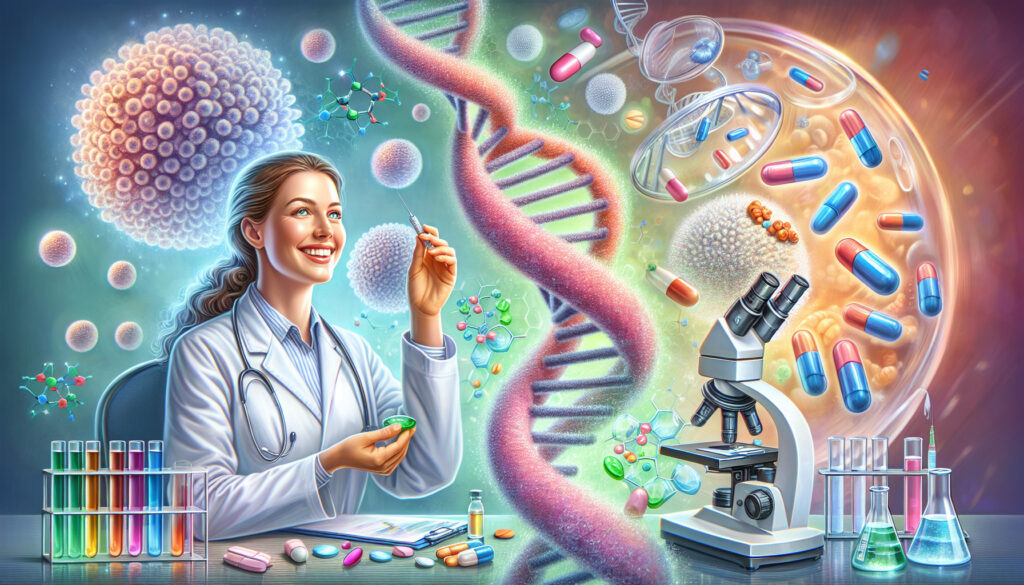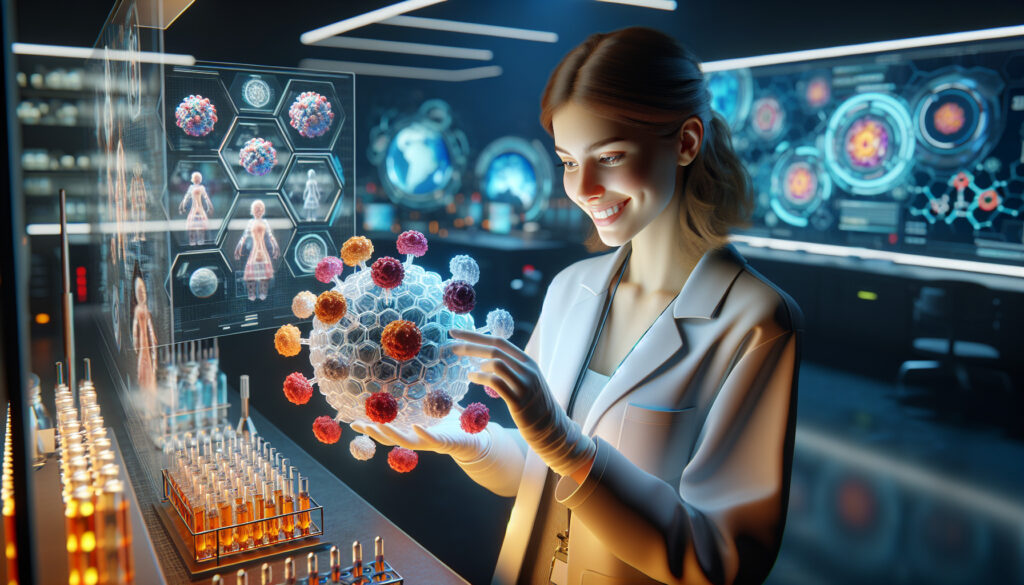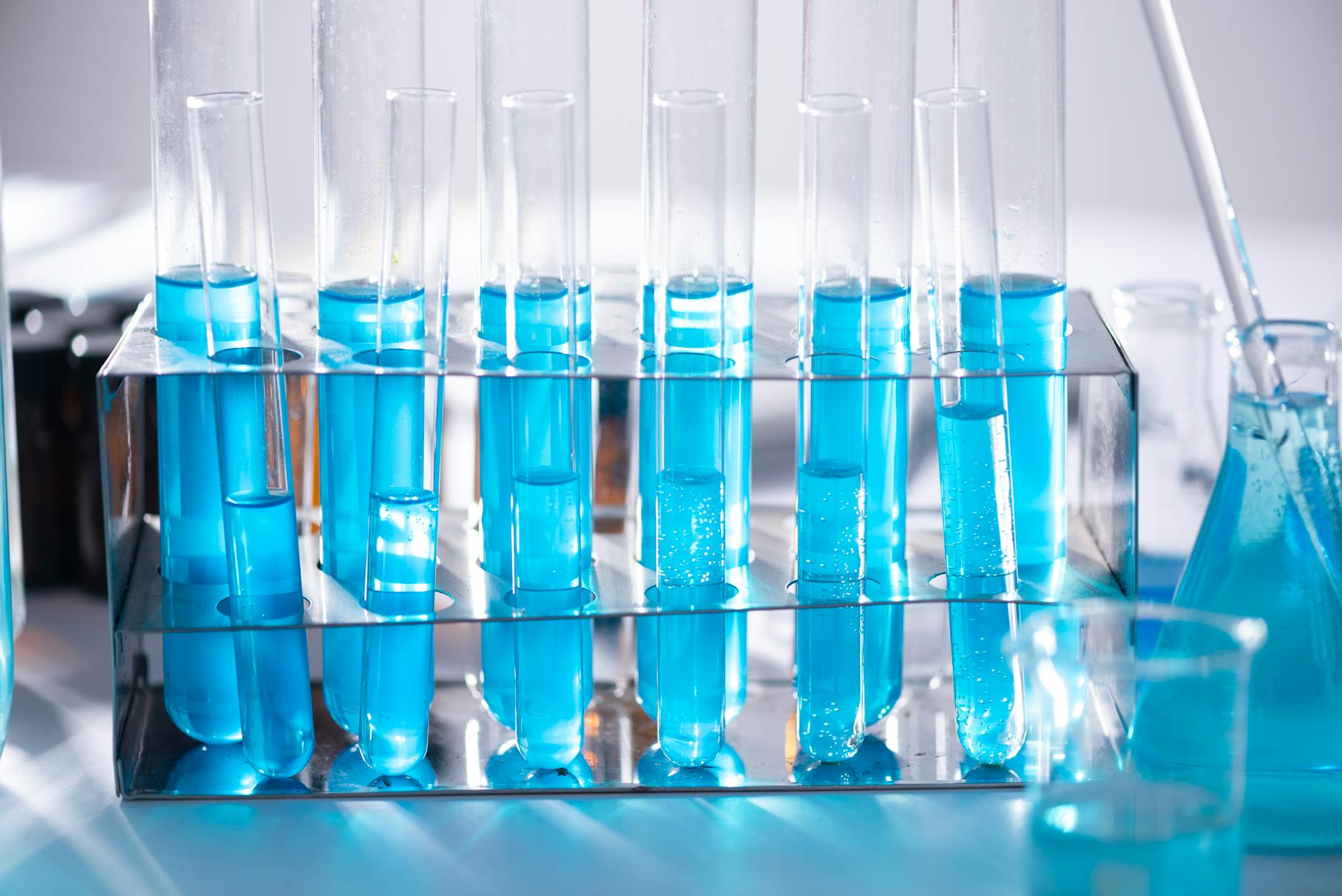
🧬 The biotech industry is on the brink of a revolution that promises to reshape our world in ways we can barely imagine. From curing previously incurable diseases to solving global environmental challenges, the potential of biotechnology is both thrilling and limitless. But with so many startups emerging in this field, how can we identify the true game-changers?
As we look ahead to 2025, a select group of biotech startups are poised to make groundbreaking advancements that could transform our lives. These innovators are pushing the boundaries in areas like gene editing, AI-powered drug discovery, and synthetic biology. They’re not just dreaming of a better future—they’re actively creating it.
In this post, we’ll take you on a journey through the biotech landscape of tomorrow. We’ll explore the criteria for identifying the most promising startups and dive into ten key areas where these companies are making waves. From breakthrough gene editing techniques to environmental biotech solutions, get ready to discover the top biotech startups that are shaping our future. 🚀

The Biotech Revolution: Understanding the Landscape
A. Defining biotech and its impact on various industries
Biotechnology, or biotech for short, is a rapidly evolving field that harnesses biological processes, organisms, and systems to develop innovative products and technologies. As we delve into the future of biotech, it’s crucial to understand its far-reaching impact across multiple industries.
Biotech’s influence extends far beyond the realm of healthcare, touching nearly every aspect of our lives. Here’s a breakdown of how biotech is revolutionizing various sectors:
- Healthcare and Medicine
- Personalized medicine
- Gene therapy
- Targeted drug delivery
- Regenerative medicine
- Agriculture and Food Production
- Genetically modified crops
- Pest-resistant plants
- Lab-grown meat
- Sustainable food sources
- Environmental Conservation
- Bioremediation
- Waste management
- Renewable energy production
- Eco-friendly materials
- Industrial Manufacturing
- Bioplastics
- Enzyme-based processes
- Biofuels
- Sustainable textiles
- Cosmetics and Personal Care
- Bio-based ingredients
- Anti-aging solutions
- Personalized skincare
The impact of biotech on these industries is profound and continues to grow. For instance, in healthcare, biotech innovations are leading to more precise diagnoses, targeted treatments, and even the potential to cure previously incurable diseases. In agriculture, biotech is helping to increase crop yields, reduce pesticide use, and develop drought-resistant plants, addressing global food security challenges.
| Industry | Biotech Impact | Examples |
|---|---|---|
| Healthcare | Personalized treatments, improved diagnostics | CRISPR gene editing, mRNA vaccines |
| Agriculture | Increased crop yields, pest resistance | Genetically modified crops, biopesticides |
| Environment | Sustainable solutions, pollution reduction | Bioremediation, biodegradable materials |
| Manufacturing | Eco-friendly processes, new materials | Bioplastics, enzyme-based production |
| Cosmetics | Natural ingredients, customized products | Biofermentation-derived ingredients |
B. The role of startups in driving innovation
Startups play a crucial role in driving innovation within the biotech industry. These agile, often specialized companies are at the forefront of developing groundbreaking technologies and pushing the boundaries of what’s possible in biotechnology. Here’s why startups are so essential to the biotech revolution:
- Focused Innovation: Unlike large pharmaceutical companies that may have diverse portfolios, biotech startups often focus on specific technologies or therapeutic areas. This laser-focused approach allows them to make rapid advancements in niche areas.
- Risk-Taking: Startups are more willing to take risks on novel ideas and unproven technologies. This risk-tolerance is crucial for pushing the boundaries of biotech innovation.
- Agility and Speed: With leaner structures and less bureaucracy, startups can move quickly from idea to prototype to market, accelerating the pace of innovation.
- Attracting Top Talent: Biotech startups often attract top scientists and researchers who are drawn to the opportunity to work on cutting-edge projects and potentially make groundbreaking discoveries.
- Collaboration Catalysts: Startups frequently collaborate with academic institutions, other companies, and even larger pharmaceutical firms, fostering a rich ecosystem of innovation.
- Disruptive Technologies: Many game-changing biotech innovations, such as CRISPR gene editing and mRNA vaccines, were initially developed by startups before being adopted more widely.
- Bridging Research and Commercialization: Startups often serve as the crucial link between academic research and commercial applications, turning scientific discoveries into marketable products.
The impact of biotech startups is evident in the increasing number of FDA approvals for novel drugs and therapies originating from these companies. In fact, a significant portion of the pharmaceutical industry’s pipeline now comes from biotech startups, highlighting their growing importance in drug discovery and development.
C. Key trends shaping the future of biotech
As we look towards 2025 and beyond, several key trends are shaping the future of biotech. These trends are not only driving innovation but also attracting significant investment and attention from both the scientific community and industry players.
- Precision Medicine and Gene Editing
The advent of CRISPR-Cas9 and other gene-editing technologies has opened up new possibilities in precision medicine. This trend is leading to:- Personalized treatments based on individual genetic profiles
- Gene therapies for previously untreatable genetic disorders
- Enhanced crop varieties with desired traits
- Artificial Intelligence and Machine Learning in Drug Discovery
AI and ML are revolutionizing the drug discovery process by:- Accelerating the identification of potential drug candidates
- Predicting drug-target interactions more accurately
- Optimizing clinical trial design and patient selection
- Synthetic Biology and Bio-engineering
This field is expanding rapidly, with applications in:- Creating novel biomaterials
- Developing sustainable biofuels
- Engineering microorganisms for various industrial processes
- Microbiome Research
The growing understanding of the human microbiome is leading to:- New approaches to treating digestive disorders
- Potential therapies for mental health conditions
- Novel probiotics and prebiotics for overall health
- Neurotechnology
Advancements in brain-computer interfaces and neurostimulation are:- Offering hope for treating neurological disorders
- Developing prosthetics controlled by thought
- Exploring ways to enhance cognitive function
- Regenerative Medicine
This field continues to evolve with:- 3D bioprinting of tissues and organs
- Stem cell therapies for various conditions
- Advanced wound healing technologies
- Environmental Biotechnology
Biotech solutions for environmental challenges are gaining traction:- Bioremediation for polluted ecosystems
- Engineered organisms for carbon capture
- Biodegradable plastics and materials
- Digital Health and Wearable Biotechnology
The integration of biotech with digital technologies is leading to:- Continuous health monitoring devices
- Smart drug delivery systems
- Telemedicine platforms with integrated diagnostics
These trends are interconnected and often synergistic. For example, AI and machine learning are accelerating advancements in precision medicine, while synthetic biology is contributing to both environmental solutions and new medical treatments.
As we move forward, the convergence of these trends is likely to lead to even more transformative innovations. The biotech startups that can effectively harness these trends and navigate the complex regulatory landscape will be well-positioned to make significant impacts in their respective fields.
Now that we’ve established a comprehensive understanding of the biotech landscape, its impact, and the key trends shaping its future, we’re ready to explore the criteria for selecting the top biotech startups to watch in 2025. These criteria will help us identify the most promising companies that are leveraging these trends and driving the biotech revolution forward.
Reference – The 5 Biggest Biotech Trends In 2022

Criteria for Selecting Top Biotech Startups
Now that we’ve explored the biotech landscape, let’s dive into the critical factors that determine which startups stand out in this dynamic field. Identifying the most promising biotech startups requires a comprehensive evaluation across several key areas. These criteria not only help investors and industry watchers spot potential game-changers but also provide a roadmap for aspiring biotech entrepreneurs.
A. Regulatory Compliance and Ethical Considerations
In the fast-paced world of biotechnology, adhering to regulatory standards and ethical guidelines is paramount. Top biotech startups must navigate a complex landscape of regulations while pushing the boundaries of innovation.
Regulatory Compliance
Biotech startups operating in 2025 face a rigorous regulatory environment. The most successful companies will:
- Demonstrate a thorough understanding of FDA, EMA, and other global regulatory bodies’ requirements
- Implement robust quality management systems
- Maintain meticulous documentation of research, development, and clinical trials
- Engage proactively with regulatory agencies throughout the product development lifecycle
Ethical Considerations
Ethical practices are non-negotiable in biotech. Leading startups will:
- Prioritize patient safety and well-being in all stages of product development
- Ensure transparent communication of risks and benefits to trial participants
- Address potential societal implications of their technologies
- Implement strong data privacy and security measures
| Aspect | Importance | Key Considerations |
|---|---|---|
| Regulatory Compliance | Critical | FDA/EMA approvals, QMS, documentation |
| Ethical Practices | Essential | Patient safety, transparency, societal impact |
| Data Privacy | Crucial | GDPR, HIPAA compliance, cybersecurity |
B. Leadership Team and Expertise
The success of a biotech startup often hinges on the caliber of its leadership team. Investors and industry observers look for:
- Scientific Expertise: A strong scientific advisory board and research team with proven track records in relevant fields.
- Business Acumen: Leaders with experience in scaling biotech companies and navigating the unique challenges of the industry.
- Cross-functional Skills: A diverse team with expertise spanning science, business development, regulatory affairs, and clinical development.
- Industry Network: Leaders with established connections in academia, industry, and regulatory bodies.
Key Leadership Roles in Top Biotech Startups
- Chief Scientific Officer (CSO)
- Chief Medical Officer (CMO)
- Chief Technology Officer (CTO)
- Chief Business Officer (CBO)
- Regulatory Affairs Director
A well-rounded leadership team combines visionary scientific thinking with pragmatic business strategy, positioning the startup for long-term success.
C. Funding and Investor Backing
In the capital-intensive biotech industry, robust funding and strategic investor backing are crucial indicators of a startup’s potential. Top biotech startups in 2025 will likely demonstrate:
- Substantial Initial Funding: Significant seed or Series A funding from reputable venture capital firms or angel investors.
- Diverse Funding Sources: A mix of private equity, grants, and strategic partnerships.
- Smart Money: Backing from investors with deep industry knowledge and valuable networks.
- Sustainable Burn Rate: Efficient use of capital with a clear path to key milestones.
Types of Funding to Look For:
- Venture Capital: From firms specializing in biotech or healthcare
- Government Grants: Such as NIH or SBIR grants in the US
- Corporate Partnerships: Strategic investments from established pharma or biotech companies
- Crowdfunding: Increasingly popular for early-stage biotech startups
A startup’s ability to secure and manage funding effectively is a strong indicator of its potential for success in the competitive biotech landscape.
D. Innovative Technology and Potential Market Impact
At the heart of every top biotech startup is groundbreaking technology with the potential to revolutionize healthcare or other relevant industries. When evaluating startups in this category, consider:
- Novelty: How unique is the technology compared to existing solutions?
- Scalability: Can the technology be scaled for widespread application?
- Market Need: Does the innovation address a significant unmet medical or industrial need?
- Competitive Advantage: What gives this technology an edge over competitors?
- Intellectual Property: Strong patent portfolio or proprietary technology
Assessing Market Impact
To gauge the potential market impact of a biotech startup’s technology, consider the following factors:
- Market Size: Addressable patient population or industry segment
- Cost-Effectiveness: Potential to reduce healthcare costs or improve efficiency
- Disruptive Potential: Ability to transform standard of care or industry practices
- Versatility: Applications across multiple diseases or industries
| Factor | High Potential | Moderate Potential | Low Potential |
|---|---|---|---|
| Market Size | >$1 billion | $100 million – $1 billion | <$100 million |
| Cost-Effectiveness | >50% cost reduction | 20-50% cost reduction | <20% cost reduction |
| Disruptive Potential | Paradigm shift | Significant improvement | Incremental improvement |
| Versatility | Multiple applications | Dual application | Single application |
Innovative technology with substantial market impact potential is a hallmark of the most promising biotech startups. These companies are not just developing novel solutions; they’re poised to transform entire fields of medicine or biotechnology.
As we look towards 2025, the biotech startups that excel in these four critical areas – regulatory compliance and ethics, leadership and expertise, funding and investor backing, and innovative technology with market impact – are the ones most likely to lead the biotech revolution. These criteria serve as a robust framework for identifying the game-changers in this rapidly evolving industry.
Next, we’ll explore some of the most exciting areas where these top biotech startups are making waves, starting with breakthrough gene editing technologies that are pushing the boundaries of what’s possible in genetic engineering.

Breakthrough Gene Editing Startups
Now that we’ve explored the criteria for selecting top biotech startups, let’s dive into one of the most exciting areas of biotechnology: gene editing. The following startups are at the forefront of this revolutionary field, pushing the boundaries of what’s possible in genetic manipulation and therapy.
A. Ethical Gene Editing for Disease Prevention
Gene editing for disease prevention is a rapidly evolving field that holds immense promise for improving human health. Several startups are leading the charge in developing ethical approaches to this technology.
GeneGuardian
GeneGuardian is a pioneering startup that focuses on using CRISPR-Cas9 technology to prevent hereditary diseases. Their innovative approach involves:
- Screening embryos for genetic disorders
- Precisely editing affected genes
- Ensuring the edits don’t cause unintended consequences
The company has developed a proprietary algorithm that predicts potential off-target effects, significantly reducing the risk of unwanted genetic modifications. This commitment to safety has earned GeneGuardian widespread recognition in the biotech community.
EthiGen Solutions
EthiGen Solutions takes a different approach to ethical gene editing. They specialize in developing gene therapies for adults with genetic disorders. Their key innovations include:
- Targeted delivery systems that minimize off-target effects
- Reversible gene editing techniques
- Personalized treatment plans based on individual genetic profiles
EthiGen’s work has shown promising results in clinical trials for conditions such as sickle cell anemia and cystic fibrosis.
B. Novel Gene Therapy Approaches
The field of gene therapy is evolving rapidly, with new approaches constantly emerging. The following startups are at the cutting edge of this exciting area.
NanoVector Therapeutics
NanoVector Therapeutics is revolutionizing gene therapy delivery with their advanced nanoparticle technology. Their innovations include:
- Biodegradable nanoparticles that can cross the blood-brain barrier
- Targeted delivery to specific cell types
- Sustained release of therapeutic genes over time
This technology has shown great promise in treating neurological disorders that were previously challenging to address with gene therapy.
RNAi Therapeutics
RNAi Therapeutics is pioneering the use of RNA interference (RNAi) for gene therapy. Their approach involves:
- Designing small interfering RNA (siRNA) molecules to target specific genes
- Developing novel delivery methods for siRNA
- Creating combination therapies that target multiple genes simultaneously
Their work has shown particular promise in treating rare genetic disorders and certain types of cancer.
C. CRISPR Pioneers Pushing Boundaries
CRISPR technology has revolutionized gene editing, and these startups are taking it to new heights.
CRISPRx Innovations
CRISPRx Innovations is pushing the boundaries of CRISPR technology with their advanced gene editing tools. Their key developments include:
- Enhanced CRISPR enzymes with improved specificity
- Novel guide RNA designs for increased efficiency
- Multiplexed editing capabilities for addressing complex genetic disorders
CRISPRx’s technologies have enabled more precise and efficient gene editing, opening up new possibilities for treating genetic diseases.
Epigenetic Editors
Epigenetic Editors takes a unique approach to gene editing by focusing on modifying gene expression without altering the DNA sequence. Their innovative platform includes:
- CRISPR-based tools for targeted epigenetic modifications
- Reversible gene activation and repression techniques
- Combinatorial approaches for fine-tuning gene expression
This approach offers a potentially safer alternative to traditional gene editing, as it doesn’t introduce permanent changes to the genome.
To better understand the different approaches these startups are taking, let’s compare them in the following table:
| Startup | Focus Area | Key Technology | Potential Applications |
|---|---|---|---|
| GeneGuardian | Embryo screening and editing | CRISPR-Cas9 with predictive algorithm | Preventing hereditary diseases |
| EthiGen Solutions | Adult gene therapy | Targeted delivery, reversible editing | Treating genetic disorders in adults |
| NanoVector Therapeutics | Gene therapy delivery | Advanced nanoparticles | Neurological disorders |
| RNAi Therapeutics | RNA interference | siRNA design and delivery | Rare genetic disorders, cancer |
| CRISPRx Innovations | Advanced CRISPR tools | Enhanced enzymes, guide RNAs | Complex genetic disorders |
| Epigenetic Editors | Epigenetic modifications | CRISPR-based epigenetic tools | Gene expression modulation |
These breakthrough gene editing startups are not only advancing the field of biotechnology but also addressing crucial ethical considerations. By focusing on safety, specificity, and reversibility, they are paving the way for more widespread acceptance and application of gene editing technologies.
The work of these startups has far-reaching implications for the future of medicine. As they continue to refine their technologies and expand their applications, we can expect to see:
- More effective treatments for previously incurable genetic disorders
- Personalized medicine tailored to individual genetic profiles
- Preventive interventions that stop diseases before they start
- New approaches to treating complex conditions like cancer and neurological disorders
However, as these technologies advance, it’s crucial to maintain an ongoing dialogue about the ethical implications of gene editing. These startups are leading the way in responsible innovation, but continued vigilance and regulation will be necessary to ensure that these powerful tools are used for the benefit of humanity.
As we look to the future, the work of these gene editing startups will likely intersect with other cutting-edge areas of biotechnology. Next, we’ll explore how AI is revolutionizing drug discovery, opening up new possibilities for treating a wide range of diseases.

AI-Powered Drug Discovery Innovators
Now that we’ve explored the criteria for selecting top biotech startups, let’s delve into one of the most exciting areas of innovation: AI-powered drug discovery. This field is revolutionizing the pharmaceutical industry, promising to accelerate the development of new treatments and potentially save countless lives.
A. Reducing costs and improving efficacy in clinical trials
AI is transforming the landscape of clinical trials, making them more efficient, cost-effective, and ultimately more successful. Here’s how AI-powered startups are making a difference:
- Patient recruitment optimization: AI algorithms can analyze vast amounts of patient data to identify ideal candidates for clinical trials, reducing recruitment time and costs.
- Predictive analytics: Machine learning models can forecast potential outcomes and side effects, allowing researchers to make informed decisions about trial design and execution.
- Real-time data analysis: AI-powered platforms can process and interpret data from multiple sources in real-time, enabling faster decision-making and course corrections during trials.
- Virtual trials: Some startups are leveraging AI to conduct decentralized or virtual clinical trials, reducing the need for physical site visits and expanding access to a broader patient population.
Here’s a comparison of traditional clinical trials versus AI-powered trials:
| Aspect | Traditional Clinical Trials | AI-Powered Clinical Trials |
|---|---|---|
| Patient Recruitment | Time-consuming, often delayed | Faster, more targeted recruitment |
| Data Analysis | Manual, prone to errors | Automated, real-time analysis |
| Cost | High, due to lengthy processes | Reduced, thanks to efficiency gains |
| Trial Design | Based on limited historical data | Optimized using predictive analytics |
| Patient Monitoring | Periodic check-ins | Continuous monitoring via wearables and IoT devices |
B. Personalized medicine through AI
AI is playing a crucial role in the advancement of personalized medicine, tailoring treatments to individual patients based on their unique genetic makeup, lifestyle, and environmental factors. Here’s how AI-powered startups are revolutionizing this field:
- Genomic analysis: AI algorithms can rapidly analyze an individual’s genome to identify genetic markers associated with disease risk or drug response.
- Treatment recommendation engines: Machine learning models can process patient data to suggest the most effective treatments based on similar cases and outcomes.
- Drug-patient matching: AI can predict which patients are most likely to respond to specific drugs, minimizing trial-and-error in treatment selection.
- Biomarker discovery: AI tools can identify novel biomarkers that indicate disease progression or treatment efficacy, enabling more precise interventions.
- Real-world evidence integration: AI platforms can analyze real-world data from electronic health records, wearables, and other sources to inform personalized treatment plans.
The impact of AI on personalized medicine:
- Increased treatment efficacy
- Reduced adverse drug reactions
- More cost-effective healthcare delivery
- Earlier disease detection and intervention
- Improved patient outcomes and quality of life
C. Machine learning for faster drug development
The traditional drug development process is notoriously slow and expensive, often taking over a decade and billions of dollars to bring a new drug to market. AI-powered startups are dramatically accelerating this process through innovative machine learning approaches:
- Target identification: AI algorithms can analyze biological data to identify promising drug targets more quickly and accurately than traditional methods.
- Compound screening: Machine learning models can predict the efficacy and safety of millions of potential drug compounds, narrowing down candidates for further testing.
- Drug repurposing: AI can identify existing drugs that may be effective for new indications, potentially fast-tracking treatments to market.
- Preclinical testing optimization: AI-powered simulations can predict drug behavior in various biological systems, reducing the need for extensive animal testing.
- Formulation development: Machine learning can optimize drug formulations for improved stability, bioavailability, and delivery.
Key advantages of AI in drug development:
- Significantly reduced time-to-market for new drugs
- Lower development costs
- Higher success rates in clinical trials
- Increased diversity in drug candidates
- More efficient use of research resources
To illustrate the impact of AI on drug development timelines, consider the following comparison:
| Stage | Traditional Timeline | AI-Accelerated Timeline |
|---|---|---|
| Target Discovery | 2-3 years | 6-12 months |
| Lead Optimization | 2-3 years | 1-2 years |
| Preclinical Testing | 1-2 years | 6-12 months |
| Clinical Trials | 5-7 years | 3-5 years |
| FDA Review | 1-2 years | 6-12 months |
| Total | 11-17 years | 6-10 years |
As we can see, AI has the potential to cut drug development time nearly in half, representing a paradigm shift in the pharmaceutical industry.
In conclusion, AI-powered drug discovery innovators are at the forefront of a biotech revolution. By reducing costs and improving efficacy in clinical trials, advancing personalized medicine, and accelerating drug development, these startups are poised to transform healthcare as we know it. Their innovations promise to bring life-saving treatments to patients faster and more efficiently than ever before.
As we move forward in our exploration of the top biotech startups to watch in 2025, we’ll next examine another exciting field: synthetic biology game-changers. These startups are harnessing the power of engineered biological systems to create novel solutions across various industries.

Synthetic Biology Game-Changers
Now that we’ve explored AI-powered drug discovery innovators, let’s dive into the fascinating world of synthetic biology and the startups that are redefining what’s possible in this field. Synthetic biology, often referred to as SynBio, is a cutting-edge discipline that combines biology, engineering, and computer science to design and construct new biological parts, devices, and systems. These game-changing startups are pushing the boundaries of what’s possible in biotechnology, with applications ranging from agriculture to industrial processes and sustainable materials.
Revolutionizing Food Production and Agriculture
Synthetic biology is set to transform the way we produce food and manage agricultural practices. Several innovative startups are leading the charge in this arena, developing solutions that promise to increase crop yields, reduce environmental impact, and create novel food products.
Crop Enhancement and Protection
One of the most promising areas in agricultural synthetic biology is the development of enhanced crops that are more resistant to pests, diseases, and environmental stresses. Startups in this space are using advanced gene editing techniques to create plants with improved traits without introducing foreign DNA.
- CropX Innovations: This startup is developing drought-resistant crops using synthetic biology techniques. Their modified plants require significantly less water, making them ideal for regions affected by climate change.
- PestGuard Biotech: Focusing on pest resistance, PestGuard is engineering crops that produce natural pesticides, reducing the need for harmful chemical sprays.
Lab-Grown Meat and Alternative Proteins
The alternative protein market is booming, and synthetic biology startups are at the forefront of this revolution. By engineering cells to produce animal proteins without the need for livestock, these companies are addressing environmental concerns and ethical issues associated with traditional meat production.
- CellFarm Technologies: This startup is pioneering the production of lab-grown meat using synthetic biology to create animal cells that can be cultivated in bioreactors.
- AlgaProtein: Specializing in algae-based proteins, AlgaProtein is using synthetic biology to enhance the nutritional profile and taste of their products.
Here’s a comparison of traditional agriculture and synthetic biology-enhanced agriculture:
| Aspect | Traditional Agriculture | Synthetic Biology-Enhanced Agriculture |
|---|---|---|
| Crop Yield | Variable, dependent on environmental factors | Higher and more consistent yields |
| Pest Resistance | Relies heavily on chemical pesticides | Engineered pest resistance, reduced chemical use |
| Water Usage | Often water-intensive | Improved water efficiency in crops |
| Nutritional Value | Limited by natural genetic variation | Enhanced nutritional profiles possible |
| Environmental Impact | Can be significant (soil degradation, pollution) | Potentially reduced environmental footprint |
Engineering Microorganisms for Industrial Applications
Synthetic biology is not just about plants and animals; microorganisms are proving to be powerful tools in various industrial processes. Startups in this field are engineering bacteria, yeast, and other microorganisms to produce valuable compounds and materials more efficiently and sustainably than traditional methods.
Biomanufacturing of Chemicals and Materials
Many chemicals and materials traditionally derived from petroleum can now be produced using engineered microorganisms. This shift towards bio-based production offers a more sustainable and often more cost-effective alternative.
- BioSynth Solutions: This startup is engineering yeast strains to produce a wide range of chemicals used in the pharmaceutical and cosmetic industries.
- FiberFerm: Specializing in textile production, FiberFerm is using bacteria to create biodegradable fibers with properties similar to synthetic materials.
Waste Treatment and Bioremediation
Engineered microorganisms are also being employed to tackle environmental challenges, such as waste treatment and pollution cleanup.
- CleanBac Technologies: This innovative startup is developing bacteria that can break down plastic waste, offering a potential solution to the global plastic pollution crisis.
- AquaPure Biotech: Focusing on water treatment, AquaPure is engineering microalgae to remove pollutants from wastewater more efficiently than traditional methods.
Creating Sustainable Materials and Fuels
As the world seeks alternatives to fossil fuels and non-biodegradable materials, synthetic biology startups are leading the way in developing sustainable solutions.
Biofuels and Renewable Energy
The quest for cleaner energy sources has led to significant advancements in biofuel production using synthetic biology.
- AlgaeFuel Innovations: This startup is engineering algae strains that produce high yields of oil, which can be easily converted into biodiesel.
- CelluloseEnergy: By modifying bacteria to break down cellulose more efficiently, CelluloseEnergy is making it possible to produce ethanol from a wider range of plant materials.
Biodegradable Plastics and Materials
Synthetic biology is enabling the creation of new materials that combine the performance of traditional plastics with biodegradability.
- BioPlast Solutions: This company is using engineered bacteria to produce polyhydroxyalkanoates (PHAs), a family of biodegradable plastics with properties similar to petroleum-based plastics.
- MycoMaterials: Focusing on fungal-based materials, MycoMaterials is creating biodegradable packaging and construction materials using engineered mycelium.
Here’s a comparison of traditional and synthetic biology-derived materials:
| Material Type | Traditional Source | Synthetic Biology Source | Environmental Impact |
|---|---|---|---|
| Plastics | Petroleum | Engineered bacteria or plants | Biodegradable, reduced carbon footprint |
| Textiles | Synthetic fibers or cotton | Engineered yeast or bacteria | Reduced water usage, biodegradable |
| Fuels | Fossil fuels | Engineered algae or bacteria | Renewable, lower emissions |
| Chemicals | Petroleum-based processes | Engineered microorganisms | Reduced waste, often biodegradable |
The synthetic biology startups mentioned above are just a few examples of the game-changing innovations happening in this field. As these technologies mature and scale, we can expect to see a significant shift towards more sustainable and efficient production methods across various industries.
The potential of synthetic biology to address global challenges such as food security, environmental pollution, and sustainable material production is immense. However, it’s important to note that as with any emerging technology, there are ethical considerations and potential risks that need to be carefully managed. Regulatory frameworks and public discourse will play crucial roles in shaping the future of synthetic biology applications.
As we look towards 2025 and beyond, these synthetic biology game-changers are poised to make significant impacts on our daily lives and the global economy. Their innovations promise to create a more sustainable and efficient future, revolutionizing everything from the food we eat to the materials we use in our everyday products.
Next, we’ll explore another exciting area of biotech innovation: the frontrunners in neurotechnology who are pushing the boundaries of brain-computer interfaces and neurological treatments.
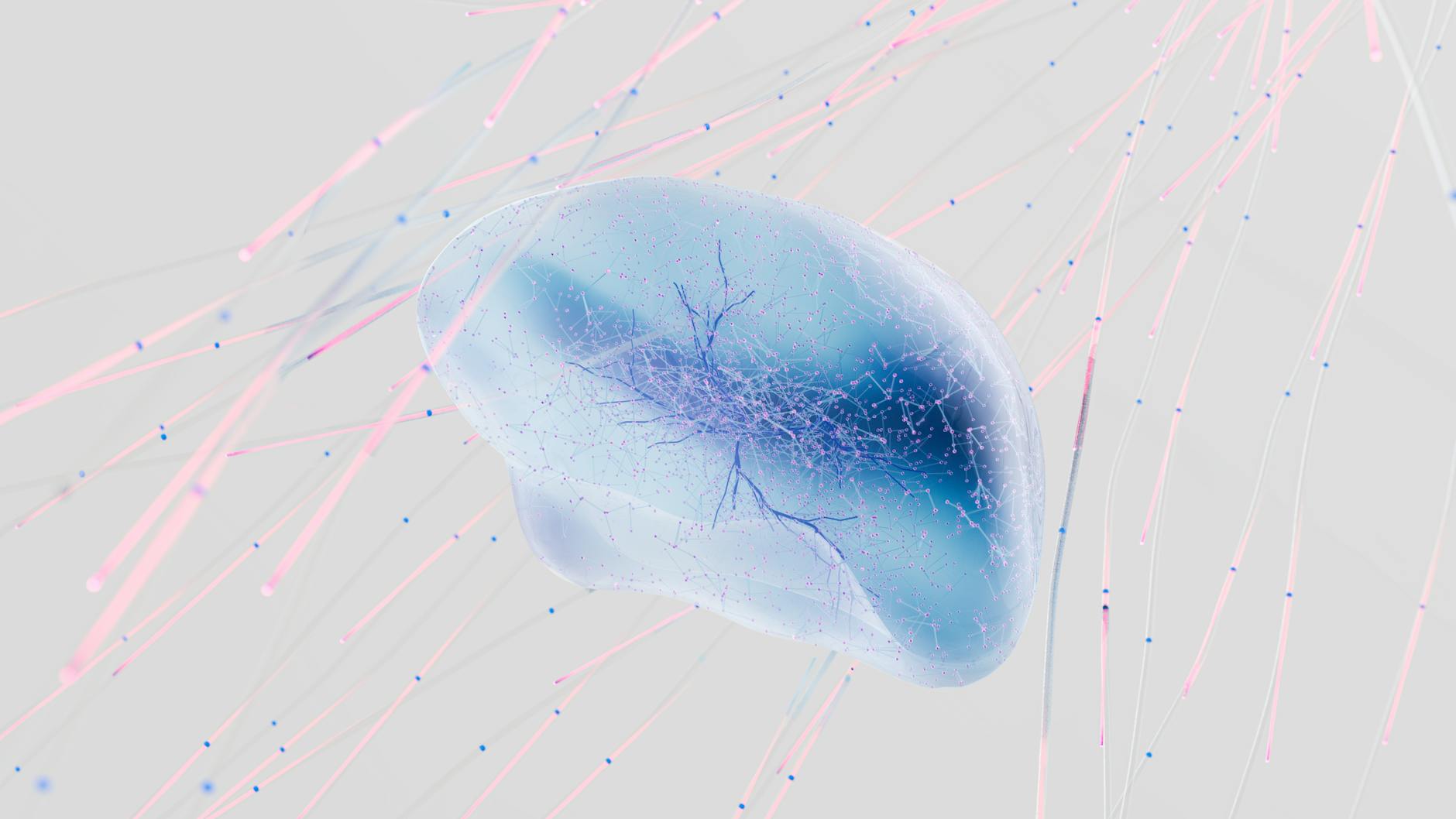
Neurotechnology Frontrunners
As we delve deeper into the exciting world of biotech startups, we now turn our attention to the cutting-edge field of neurotechnology. These innovative companies are at the forefront of revolutionizing our understanding and treatment of the human brain, promising to transform cognitive functions, mental health, and neurological disorders.
Enhancing cognitive functions and mental health
Neurotechnology startups are making significant strides in developing tools and treatments to boost cognitive functions and improve mental health. These advancements are not only helping individuals with existing conditions but also pushing the boundaries of human potential.
Cognitive Enhancement Technologies
Several startups are focusing on non-invasive technologies to enhance cognitive functions such as memory, attention, and decision-making. Here are some of the most promising approaches:
- Transcranial magnetic stimulation (TMS): This technique uses magnetic fields to stimulate specific areas of the brain, potentially improving cognitive performance.
- Neurofeedback: By providing real-time feedback on brain activity, this method helps users learn to control their brain waves and potentially enhance cognitive functions.
- Smart drugs (nootropics): Innovative startups are developing advanced cognitive enhancers that promise to boost mental performance with minimal side effects.
Mental Health Innovations
The mental health landscape is being transformed by neurotechnology startups. Here’s a look at some groundbreaking approaches:
- Virtual reality (VR) therapy: Immersive VR experiences are being used to treat conditions like PTSD, anxiety, and phobias.
- AI-powered mental health chatbots: These digital assistants provide 24/7 support and can help identify early signs of mental health issues.
- Personalized treatment algorithms: By analyzing vast amounts of patient data, these systems can recommend tailored treatment plans for individuals with mental health conditions.
| Technology | Application | Potential Benefits |
|---|---|---|
| TMS | Cognitive enhancement | Improved memory and attention |
| Neurofeedback | Brain training | Better emotional regulation |
| VR Therapy | Mental health treatment | Reduced anxiety and PTSD symptoms |
| AI Chatbots | Mental health support | Early detection and intervention |
Treating neurological disorders with cutting-edge tech
Neurotechnology startups are making significant progress in developing innovative treatments for a wide range of neurological disorders. These advancements offer hope to millions of people worldwide who suffer from conditions that were previously considered untreatable or difficult to manage.
Neurodegenerative Diseases
Startups are tackling some of the most challenging neurodegenerative diseases, including Alzheimer’s, Parkinson’s, and ALS. Here are some promising approaches:
- Gene therapy: Targeting specific genetic mutations associated with neurodegenerative diseases to slow or halt disease progression.
- Neuroprotective compounds: Developing drugs that protect neurons from damage and degeneration.
- Stem cell therapies: Using stem cells to regenerate damaged neural tissue and restore function.
Epilepsy and Seizure Disorders
Innovative startups are revolutionizing the treatment of epilepsy and other seizure disorders:
- Closed-loop neurostimulation: Devices that can detect and respond to seizure activity in real-time, providing targeted stimulation to stop seizures before they start.
- Optogenetics: Using light-sensitive proteins to control specific neurons, potentially offering precise control over seizure activity.
- Personalized anti-epileptic drugs: Leveraging AI and genetic data to develop tailored medications with improved efficacy and fewer side effects.
Stroke Recovery
Neurotechnology startups are also making significant strides in improving stroke recovery:
- Robotic rehabilitation: Advanced exoskeletons and robotic devices that assist with movement and promote neuroplasticity.
- Brain-computer interfaces: Systems that allow stroke survivors to control assistive devices using their thoughts, potentially restoring lost functions.
- Targeted neuromodulation: Precise stimulation of specific brain regions to enhance recovery and reduce post-stroke complications.
Brain-computer interfaces for medical applications
Brain-computer interfaces (BCIs) represent one of the most exciting frontiers in neurotechnology. These systems establish a direct communication pathway between the brain and external devices, opening up a world of possibilities for medical applications.
Restoring Communication and Movement
BCIs are offering new hope for individuals with severe motor impairments:
- Speech synthesis: BCIs that can translate brain signals into speech, allowing non-verbal individuals to communicate.
- Prosthetic control: Advanced prosthetic limbs that can be controlled directly by thought, providing more natural and intuitive movement.
- Spinal cord injury bypass: BCIs that can bypass damaged areas of the spinal cord, potentially restoring movement to paralyzed limbs.
Sensory Restoration
Innovative startups are using BCIs to restore lost senses:
- Visual prostheses: Devices that can stimulate the visual cortex to produce artificial vision for the blind.
- Cochlear implants: Advanced BCIs that can provide more natural hearing experiences for the deaf or hard of hearing.
- Haptic feedback systems: BCIs that can restore the sense of touch for individuals with sensory impairments.
Diagnostic and Monitoring Tools
BCIs are also being developed as powerful diagnostic and monitoring tools:
- Early detection of neurological disorders: BCIs that can identify subtle changes in brain activity associated with the onset of conditions like Alzheimer’s or Parkinson’s.
- Continuous brain monitoring: Wearable BCIs that can track brain health over time, potentially alerting users to cognitive decline or other issues.
- Personalized treatment optimization: BCIs that can provide real-time feedback on treatment efficacy, allowing for rapid adjustments and improved outcomes.
| BCI Application | Target Population | Potential Impact |
|---|---|---|
| Speech synthesis | Non-verbal individuals | Restored ability to communicate |
| Prosthetic control | Amputees | More natural and intuitive movement |
| Visual prostheses | Blind individuals | Partial restoration of vision |
| Early detection systems | General population | Earlier intervention for neurological disorders |
As we look towards 2025, these neurotechnology frontrunners are poised to make significant contributions to healthcare and human potential. Their innovative approaches to enhancing cognitive functions, treating neurological disorders, and developing brain-computer interfaces promise to transform the lives of millions.
The rapid pace of advancement in this field suggests that we may soon see breakthroughs that were once confined to the realm of science fiction. From restoring lost senses to augmenting human cognition, these neurotechnology startups are pushing the boundaries of what’s possible in brain science and medicine.
As we move forward, it’s crucial to consider the ethical implications of these technologies and ensure that they are developed and implemented responsibly. The potential benefits are enormous, but so too are the challenges and risks associated with directly interfacing with the human brain.
Next, we’ll explore another exciting area of biotech innovation: regenerative medicine trailblazers. These startups are working on groundbreaking technologies to repair, replace, and regenerate damaged tissues and organs, offering hope for conditions that were once considered untreatable.

Regenerative Medicine Trailblazers
As we delve deeper into the world of biotechnology, regenerative medicine stands out as a field with immense potential to revolutionize healthcare. The startups in this domain are pushing the boundaries of what’s possible in healing and restoring the human body. Let’s explore three groundbreaking areas where regenerative medicine trailblazers are making significant strides.
Nanomedicine for Targeted Treatments
Nanomedicine represents a cutting-edge approach to delivering therapies at the molecular level. Biotech startups in this field are developing innovative solutions that could transform the treatment of various diseases, from cancer to genetic disorders.
Key Advancements in Nanomedicine:
- Nanoparticle Drug Delivery Systems
- Theranostic Nanoplatforms
- Nano-based Imaging Technologies
- Nanorobots for Precision Medicine
One of the most promising aspects of nanomedicine is its potential for highly targeted treatments. By using nanoparticles as carriers, drugs can be delivered directly to specific cells or tissues, minimizing side effects and maximizing therapeutic efficacy.
| Nanomedicine Approach | Advantages | Potential Applications |
|---|---|---|
| Nanoparticle Drug Delivery | Increased bioavailability, Controlled release | Cancer therapy, Gene therapy |
| Theranostic Nanoplatforms | Combined diagnosis and treatment | Personalized medicine, Real-time monitoring |
| Nano-imaging | Enhanced resolution, Non-invasive | Early disease detection, Surgical guidance |
| Nanorobots | Precise intervention, Minimally invasive | Targeted drug delivery, Microsurgery |
Startups in this space are focusing on developing novel nanomaterials and improving the precision of nanoparticle targeting. For instance, some companies are working on smart nanoparticles that can change their properties in response to specific biological triggers, ensuring drugs are released only where and when needed.
Stem Cell Therapies for Degenerative Diseases
Stem cell research has long been heralded as a potential game-changer in medicine, and biotech startups are now bringing this promise closer to reality. The focus is on harnessing the regenerative power of stem cells to treat a wide range of degenerative diseases.
Emerging Stem Cell Therapies:
- Induced Pluripotent Stem Cells (iPSCs)
- Mesenchymal Stem Cells (MSCs)
- Neural Stem Cells (NSCs)
- Cardiac Stem Cells (CSCs)
These various types of stem cells offer unique advantages for treating different conditions. For example, iPSCs can be generated from a patient’s own cells, potentially eliminating the risk of immune rejection in transplantation.
Startups in the stem cell therapy space are tackling some of the most challenging degenerative diseases:
- Parkinson’s Disease: Companies are developing therapies using dopamine-producing neurons derived from stem cells to replace those lost in Parkinson’s patients.
- Alzheimer’s Disease: Research is underway to use neural stem cells to regenerate damaged brain tissue and improve cognitive function.
- Type 1 Diabetes: Startups are working on creating insulin-producing beta cells from stem cells to restore normal insulin production.
- Heart Failure: Cardiac stem cells are being explored as a means to regenerate damaged heart tissue following a heart attack.
- Macular Degeneration: Retinal pigment epithelial cells derived from stem cells are being tested to restore vision in patients with age-related macular degeneration.
The potential of stem cell therapies extends beyond these conditions, with ongoing research into applications for spinal cord injuries, autoimmune disorders, and even anti-aging treatments.
3D Bioprinting of Organs and Tissues
Perhaps one of the most visually striking and conceptually revolutionary areas of regenerative medicine is 3D bioprinting. This technology combines the principles of 3D printing with biological materials to create living tissues and organs.
Key Components of 3D Bioprinting:
- Bioinks: Specialized materials that contain living cells and support their growth
- Bioprinters: Advanced 3D printers capable of precisely depositing bioinks
- Scaffolds: Structures that provide support for growing tissues
- Vascularization techniques: Methods to ensure blood supply to printed tissues
Biotech startups in this field are tackling the complex challenge of creating functional, transplantable organs. While we’re not yet at the point of printing fully functional complex organs like hearts or kidneys, significant progress has been made in several areas:
| Tissue/Organ | Current Status | Potential Applications |
|---|---|---|
| Skin | Advanced stage, clinical trials | Burn treatment, Wound healing |
| Cartilage | Promising results in animal studies | Joint repair, Osteoarthritis treatment |
| Blood Vessels | Successfully implanted in humans | Vascular disease treatment, Organ transplant support |
| Mini-organs | In vitro models available | Drug testing, Personalized medicine |
| Complex Organs | Early research stage | Organ transplantation, Reducing donor organ shortage |
One of the most immediate applications of 3D bioprinting is in drug discovery and toxicology testing. By creating “organs-on-a-chip” – miniature models of human organs – researchers can test new drugs more accurately and efficiently than traditional methods allow.
Startups are also exploring the potential of 3D bioprinting in personalized medicine. By using a patient’s own cells to create tissue constructs, it may be possible to develop tailored treatments or even replacement tissues that are perfectly matched to the individual.
The field of 3D bioprinting faces several challenges, including:
- Scaling up from small tissue constructs to full-sized organs
- Ensuring proper vascularization of printed tissues
- Maintaining cell viability during and after the printing process
- Developing bioinks that can mimic the complex structures of natural tissues
Despite these challenges, the potential of 3D bioprinting to address the global organ shortage and revolutionize personalized medicine continues to drive innovation in this field.
As we look towards 2025 and beyond, these regenerative medicine trailblazers are poised to make significant impacts on healthcare. From targeted nanomedicine treatments to patient-specific stem cell therapies and 3D-printed organs, the future of medicine is becoming increasingly personalized, precise, and regenerative. Next, we’ll explore another exciting frontier in biotechnology: the startups focusing on harnessing the power of the human microbiome.
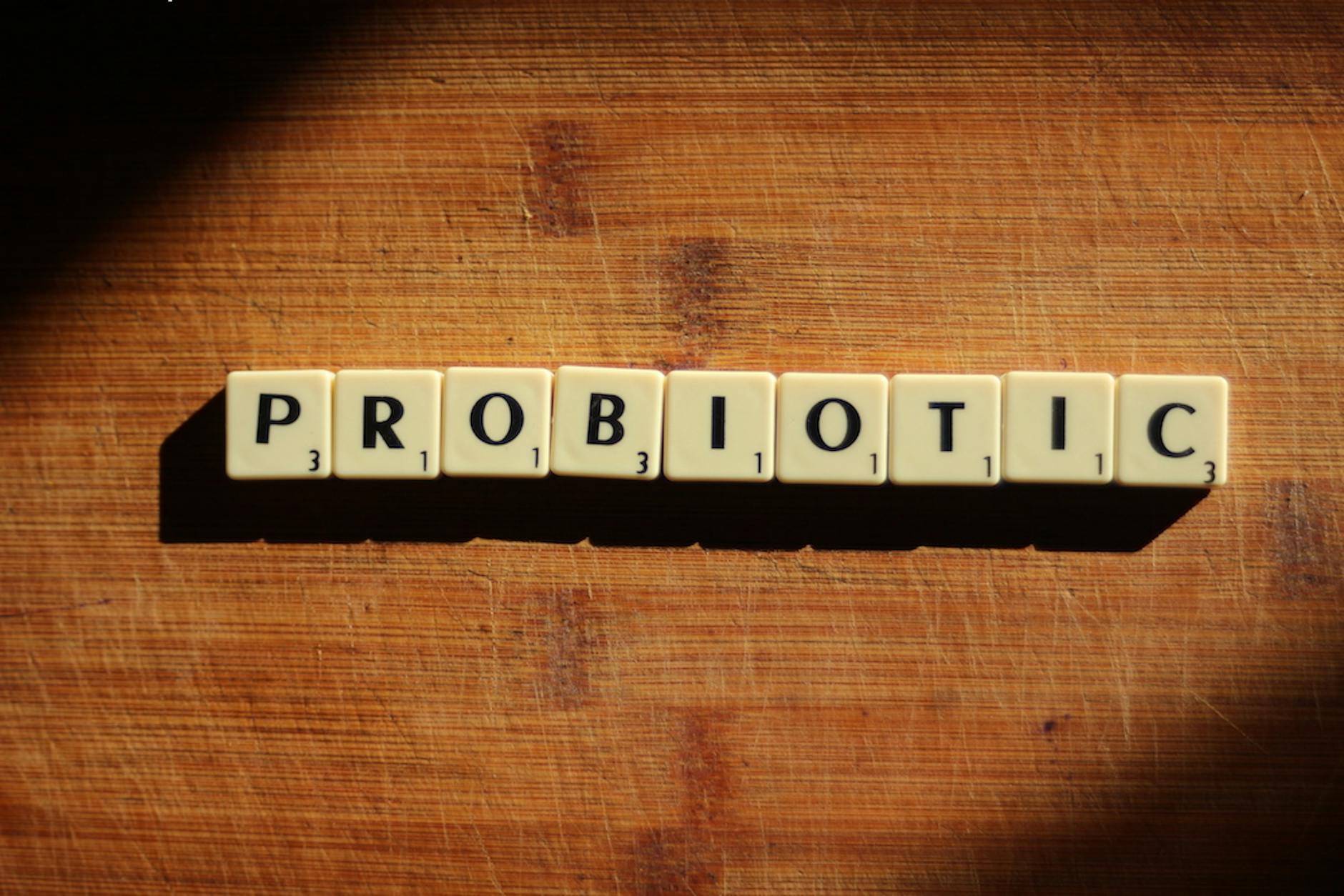
Microbiome-Focused Innovators
As we delve deeper into the world of biotechnology, we encounter a fascinating frontier that’s revolutionizing our understanding of health and disease: the human microbiome. In this section, we’ll explore the cutting-edge startups that are harnessing the power of the microbiome to transform healthcare, nutrition, and overall well-being.
Personalized Nutrition through Microbiome Analysis
The concept of “you are what you eat” has taken on a whole new meaning with the advent of microbiome-based personalized nutrition. Innovative biotech startups are leveraging advanced sequencing technologies and machine learning algorithms to analyze individual gut microbiomes and tailor dietary recommendations accordingly.
Key Players in Microbiome-Based Nutrition
- NutriBiome: This startup uses AI-powered microbiome analysis to create personalized meal plans that optimize gut health and overall wellness.
- MicroDiet Solutions: Offering at-home microbiome testing kits, this company provides detailed reports on how different foods affect your unique gut bacteria composition.
- GutSmart Technologies: Combining microbiome data with genetic information, GutSmart develops custom probiotic and prebiotic supplements tailored to individual needs.
These microbiome research startups are not only transforming the way we approach nutrition but are also paving the way for more targeted and effective dietary interventions in the treatment of various health conditions.
| Company | Key Technology | Unique Selling Point |
|---|---|---|
| NutriBiome | AI-powered microbiome analysis | Personalized meal plans |
| MicroDiet Solutions | At-home microbiome testing | Food-microbiome interaction reports |
| GutSmart Technologies | Combined microbiome and genetic analysis | Custom probiotic/prebiotic supplements |
Developing Microbiome-Based Therapies
The potential of the microbiome in treating various diseases has caught the attention of many biopharmaceutical startups. These companies are at the forefront of developing novel therapies that target or modulate the microbiome to treat a wide range of conditions, from gastrointestinal disorders to neurological diseases.
Emerging Therapies and Their Potential
- Inflammatory Bowel Disease (IBD) Treatment: Startups like MicroBiome Therapeutics are developing targeted probiotics and prebiotics to restore balance in the gut microbiome of IBD patients.
- Mental Health Interventions: Companies such as PsychoBiotic Inc. are exploring the gut-brain axis, developing microbiome-based treatments for conditions like depression and anxiety.
- Cancer Immunotherapy Enhancement: Innovative firms like OncoMicrobe are investigating how modulating the microbiome can boost the effectiveness of cancer immunotherapies.
- Metabolic Disease Management: Startups such as MetaboBiotics are creating microbiome-based solutions for managing diabetes and obesity.
These cutting-edge biotech startups are not only addressing current health challenges but are also shaping the future of medicine by tapping into the vast potential of the human microbiome.
Harnessing Gut Bacteria for Improved Health
Beyond nutrition and disease treatment, biotech innovators are exploring various ways to leverage gut bacteria for overall health improvement. This approach represents a paradigm shift in how we view health and wellness, moving from a reactive to a proactive stance.
Key Areas of Innovation
- Microbiome Restoration: Companies like ResetBiome are developing techniques to restore healthy microbiome balance after antibiotic treatments or other disruptions.
- Skin Health: Startups such as DermaFlora are creating topical products that support a healthy skin microbiome, addressing issues like acne and eczema.
- Infant Health: Firms like BabyBiome are focusing on the crucial early development of the infant microbiome, offering products that support healthy colonization of beneficial bacteria.
- Athletic Performance: Innovative startups like AthleteBiotics are exploring how optimizing the gut microbiome can enhance athletic performance and recovery.
- Aging and Longevity: Companies such as LongeviTech are investigating the role of the microbiome in healthy aging and developing interventions to support longevity.
These diverse applications highlight the vast potential of microbiome research in improving various aspects of human health and well-being.
The Future of Microbiome-Focused Innovation
As we look towards 2025 and beyond, the microbiome field is poised for exponential growth and breakthrough discoveries. Here are some trends and predictions for the future of microbiome-focused biotech:
- Integration with Other Technologies: We can expect to see increased integration of microbiome research with other cutting-edge technologies like AI, CRISPR gene editing, and nanotechnology.
- Expansion into New Health Areas: Microbiome research is likely to expand into new areas of health, potentially uncovering links to conditions not previously associated with gut bacteria.
- Personalized Medicine Revolution: The microbiome could be the key to truly personalized medicine, with treatments tailored not just to an individual’s genetics, but also to their unique microbial composition.
- Regulatory Developments: As microbiome-based therapies become more prevalent, we can expect to see new regulatory frameworks developed to ensure their safety and efficacy.
- Consumer Empowerment: With the increasing availability of at-home microbiome testing kits, consumers will become more empowered to take control of their gut health.
The microbiome-focused startups of today are laying the groundwork for a future where our microscopic inhabitants play a central role in how we approach health, nutrition, and medicine. As we continue to unravel the complexities of the human microbiome, we can expect to see even more innovative and transformative applications emerge in the biotech industry.
Next, we’ll explore another exciting frontier in biotechnology: environmental biotech solutions. These startups are leveraging the power of biology to address some of our planet’s most pressing environmental challenges.
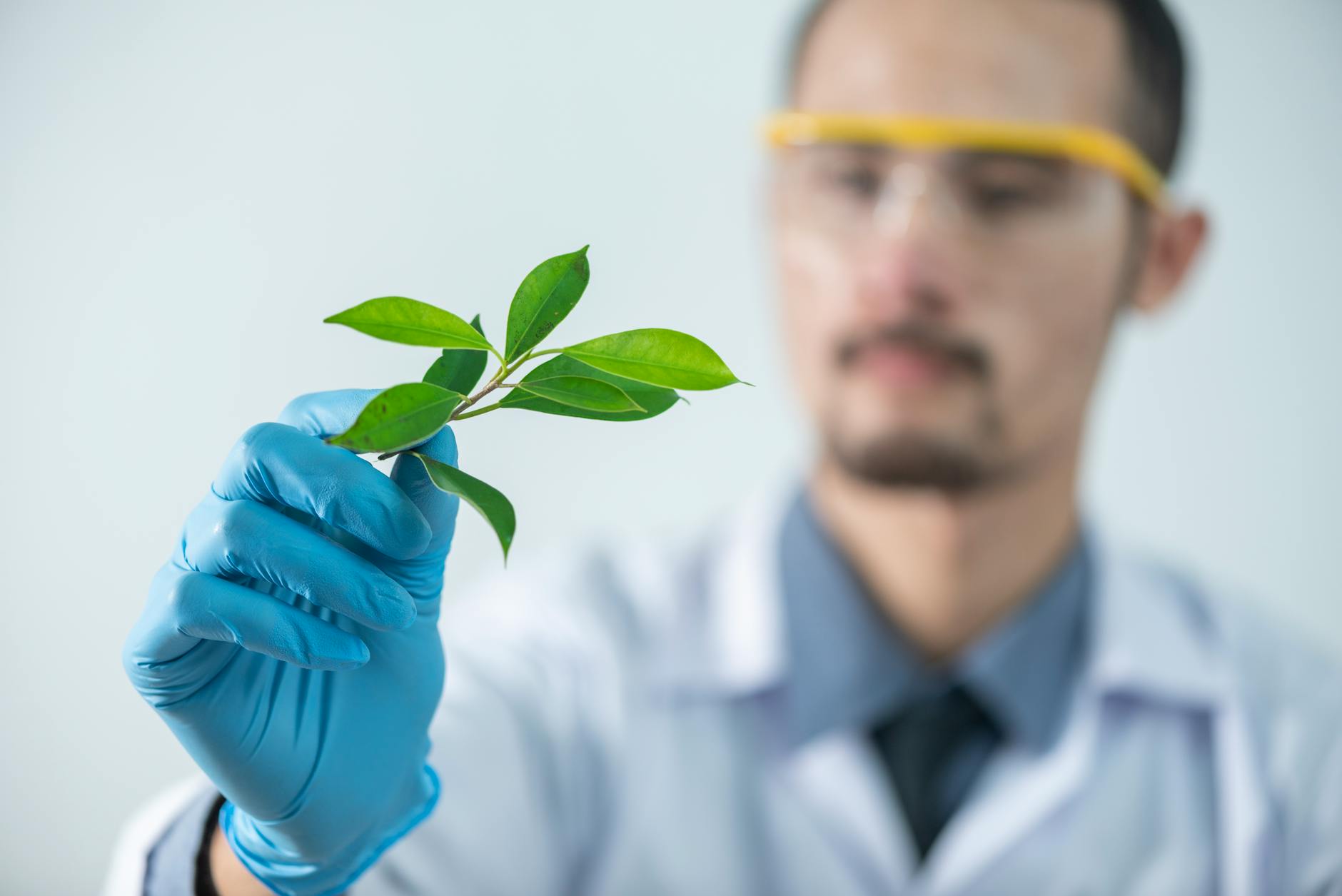
Environmental Biotech Solutions
As we delve into the exciting realm of environmental biotech solutions, we’ll explore how innovative startups are leveraging biotechnology to address some of the most pressing environmental challenges of our time. These companies are not only pushing the boundaries of science but also paving the way for a more sustainable future.
A. Biotech approaches to combat climate change
Biotechnology is emerging as a powerful tool in the fight against climate change. Startups in this space are developing groundbreaking solutions that could significantly reduce greenhouse gas emissions and mitigate the impacts of global warming.
Carbon Capture and Utilization (CCU)
One of the most promising areas of environmental biotech is carbon capture and utilization. Innovative startups are developing engineered microorganisms capable of capturing carbon dioxide from the atmosphere and converting it into valuable products. Here’s a breakdown of some cutting-edge approaches:
- Algae-based carbon capture: Companies are cultivating specialized algae strains that can absorb CO2 at rates up to 400 times faster than trees.
- Bacterial conversion: Engineered bacteria are being used to convert CO2 into biofuels, reducing our reliance on fossil fuels.
- Enzyme-driven processes: Novel enzymes are being developed to catalyze the conversion of CO2 into useful chemicals and materials.
Methane Reduction Technologies
Methane is a potent greenhouse gas, and biotech startups are tackling its reduction through various innovative approaches:
- Methanotroph engineering: These bacteria naturally consume methane, and startups are enhancing their capabilities to reduce methane emissions from landfills and agriculture.
- Rumen microbiome modification: By altering the gut microbiome of livestock, companies aim to reduce methane emissions from cattle and other ruminants.
Climate-Resilient Crops
As climate change alters growing conditions worldwide, biotech startups are developing crops that can thrive in challenging environments:
| Crop Trait | Description | Potential Impact |
|---|---|---|
| Drought tolerance | Engineered crops that require less water | Increased food security in arid regions |
| Heat resistance | Plants capable of withstanding higher temperatures | Expanded growing regions and seasons |
| Saline tolerance | Crops that can grow in salt-affected soils | Reclamation of degraded agricultural land |
These innovations not only help adapt to climate change but also reduce the environmental impact of agriculture by decreasing water usage and the need for chemical inputs.
B. Developing eco-friendly materials
The biotech industry is at the forefront of creating sustainable alternatives to traditional materials, addressing issues of pollution and resource depletion.
Bioplastics and Biodegradable Materials
Startups in this space are developing new materials that offer the functionality of plastics without the environmental drawbacks:
- PHA (Polyhydroxyalkanoates): Naturally occurring biopolymers produced by bacteria, which are fully biodegradable and compostable.
- Cellulose-based plastics: Derived from plant waste, these materials offer a renewable alternative to petroleum-based plastics.
- Mycelium materials: Fungal networks are being harnessed to create biodegradable packaging and building materials.
Bio-based Textiles
The textile industry is undergoing a bio-revolution, with startups creating sustainable fabrics from innovative sources:
- Algae-based fibers: Companies are developing soft, durable fabrics from algae biomass, offering a low-impact alternative to cotton.
- Lab-grown leather: Bioengineered collagen is being used to create leather substitutes without animal involvement.
- Spider silk: Genetically modified bacteria are being used to produce strong, flexible fibers inspired by spider silk.
Green Chemistry Solutions
Biotech startups are also revolutionizing chemical production processes, creating more sustainable alternatives to traditional petrochemicals:
| Traditional Chemical | Bio-based Alternative | Environmental Benefit |
|---|---|---|
| Synthetic rubber | Microbial-produced isoprene | Reduced petroleum dependence |
| Acrylic acid | Sugar-derived 3-hydroxypropionic acid | Lower carbon footprint |
| Nylon | Bio-based caprolactam | Decreased energy consumption |
These green chemistry innovations not only reduce environmental impact but also often result in safer, non-toxic alternatives to conventional chemicals.
C. Bioremediation for pollution control
Bioremediation harnesses the power of living organisms to clean up contaminated environments. Biotech startups are developing advanced techniques to tackle various forms of pollution more effectively and efficiently than ever before.
Microbe-Powered Cleanup
Innovative companies are engineering microorganisms with enhanced capabilities for breaking down pollutants:
- Oil spill remediation: Bacteria designed to rapidly degrade hydrocarbons in marine environments.
- Plastic-eating enzymes: Engineered enzymes capable of breaking down plastic waste into its chemical components.
- Heavy metal absorption: Genetically modified plants and bacteria that can absorb and sequester toxic metals from soil and water.
Phytoremediation Advancements
Startups are also focusing on improving plant-based remediation techniques:
- Hyperaccumulator plants: Breeding and engineering plants that can extract and concentrate high levels of pollutants from soil.
- Root system enhancements: Developing plants with more extensive root systems to increase the reach and efficiency of phytoremediation.
- Symbiotic relationships: Exploring plant-microbe partnerships to enhance pollutant uptake and degradation.
Biosensors for Environmental Monitoring
To support bioremediation efforts, companies are developing advanced biosensors for real-time pollution detection:
| Biosensor Type | Target Pollutant | Application |
|---|---|---|
| Whole-cell biosensors | Heavy metals | Water quality monitoring |
| Enzyme-based sensors | Pesticides | Soil contamination assessment |
| DNA biosensors | Pathogens | Wastewater treatment monitoring |
These biosensors offer rapid, on-site detection capabilities, enabling more timely and targeted remediation efforts.
As we look towards the future of environmental biotech, it’s clear that these innovative solutions have the potential to revolutionize our approach to environmental challenges. From combating climate change to developing sustainable materials and cleaning up pollution, biotech startups are paving the way for a cleaner, greener future.
Next, we’ll explore the emerging biotech markets and applications that are set to shape the industry’s future beyond environmental solutions.

Emerging Biotech Markets and Applications
As we’ve explored the groundbreaking innovations in various biotech sectors, it’s time to look at some of the most exciting emerging markets and applications that are set to reshape the industry by 2025. These new frontiers demonstrate the incredible versatility and potential of biotechnology, pushing the boundaries of what’s possible in fields we might not immediately associate with biotech.
A. Intersection of biotech and cybersecurity
The convergence of biotechnology and cybersecurity is creating a fascinating new field that addresses unique challenges in our increasingly digital world. This intersection is giving rise to innovative startups that are developing cutting-edge solutions to protect biological data and systems from cyber threats.
Biometric Authentication Systems
One of the most promising areas in this emerging market is the development of advanced biometric authentication systems. These systems use biological markers, such as DNA sequences, protein structures, or even brain wave patterns, to create highly secure and personalized authentication methods.
- DNA-based authentication: Startups are working on systems that use an individual’s unique genetic code as a form of identification, making it nearly impossible to forge or replicate.
- Protein-based biometrics: Some companies are exploring the use of protein structures as biometric markers, offering a level of complexity that surpasses traditional fingerprint or facial recognition systems.
- Neurobiometric authentication: This cutting-edge technology uses brain wave patterns as a form of identification, potentially revolutionizing secure access to sensitive information and systems.
Biosecurity for Digital Systems
Another critical area in the biotech-cybersecurity intersection is the development of biological-inspired security measures for digital systems.
- Biomimetic algorithms: Startups are creating security algorithms inspired by biological processes, such as the human immune system, to detect and respond to cyber threats more effectively.
- Synthetic biology-based encryption: Some companies are exploring the use of synthetic DNA sequences as encryption keys, potentially offering unparalleled levels of data security.
Protecting Biological Data
With the increasing digitization of biological information, protecting this sensitive data has become a crucial concern. Startups in this space are developing specialized solutions to safeguard genetic information, medical records, and other biological data.
| Startup Focus | Description | Potential Impact |
|---|---|---|
| Genome Data Protection | Developing secure storage and transmission systems for genomic data | Ensures privacy and security of personal genetic information |
| Biomedical IoT Security | Creating secure protocols for connected medical devices | Protects patients’ health data and prevents unauthorized access to medical systems |
| Synthetic Biology IP Protection | Developing blockchain-based systems to secure intellectual property in synthetic biology | Safeguards valuable research and innovations in the biotech industry |
B. Biotech in digital health and wearables
The integration of biotechnology with digital health and wearable devices is another emerging market that’s poised for significant growth by 2025. This convergence is enabling more personalized, real-time health monitoring and interventions.
Advanced Biosensors
Startups in this space are developing increasingly sophisticated biosensors that can be integrated into wearable devices or even implanted in the body.
- Continuous glucose monitoring: Next-generation sensors that provide real-time blood sugar data without the need for finger pricks.
- Sweat analysis wearables: Devices that can analyze sweat composition to provide insights into hydration, electrolyte balance, and even stress levels.
- Implantable biosensors: Miniature sensors that can be implanted in the body to monitor various health parameters continuously.
Biotech-Enhanced Digital Therapeutics
The combination of biotechnology and digital therapeutics is leading to more effective, personalized treatment options.
- Neurofeedback devices: Wearables that use real-time brain activity data to help manage conditions like ADHD or anxiety.
- Biome-modulating apps: Applications that use microbiome data to provide personalized diet and lifestyle recommendations.
- Gene therapy monitoring wearables: Devices that track the effectiveness of gene therapies in real-time, allowing for more precise treatment adjustments.
Bioengineered Wearables
Some startups are pushing the boundaries by developing wearables that incorporate living biological components.
- Living sensor tattoos: Bioengineered temporary tattoos that change color in response to specific health conditions or environmental factors.
- Symbiotic wearables: Devices that incorporate beneficial microorganisms to enhance skin health or provide other biological functions.
| Wearable Type | Function | Potential Applications |
|---|---|---|
| Advanced Biosensors | Continuous health monitoring | Diabetes management, stress monitoring, early disease detection |
| Biotech-Enhanced Digital Therapeutics | Personalized treatment delivery | Mental health management, microbiome optimization, gene therapy monitoring |
| Bioengineered Wearables | Biological sensing and intervention | Environmental hazard detection, skin health improvement, personalized nutrition |
C. Space biotechnology for long-term missions
As humanity sets its sights on long-term space exploration and potential colonization, biotechnology is playing a crucial role in addressing the unique challenges of extended space missions. Startups in this emerging market are developing innovative solutions to support human life in extreme environments.
Bioregenerative Life Support Systems
One of the key challenges of long-term space missions is creating sustainable life support systems. Biotech startups are working on closed-loop systems that can recycle air, water, and waste while producing food.
- Algae-based air purification: Systems that use genetically engineered algae to efficiently convert CO2 into oxygen and edible biomass.
- Synthetic soil ecosystems: Bioengineered soil substitutes that can support plant growth in microgravity environments.
- Microbial waste processing: Advanced systems that use specialized microorganisms to break down human waste and other organic materials into usable resources.
Radiation Protection through Biotechnology
Protecting astronauts from harmful space radiation is another critical area where biotechnology is making significant strides.
- Radiation-resistant probiotics: Genetically engineered beneficial bacteria that can help protect the human gut from radiation damage.
- Bioengineered protective materials: Living materials that can adapt and respond to radiation exposure, providing dynamic shielding for spacecraft and habitats.
- Gene therapy for radiation resistance: Treatments that can temporarily enhance the body’s natural radiation resistance for long-term space missions.
Space-Adapted Organisms and Tissues
Startups are also focusing on developing organisms and tissues that can thrive in the unique conditions of space, supporting both scientific research and potential terraforming efforts.
- Microgravity-adapted plants: Genetically modified plants that can grow efficiently in low-gravity environments, providing food and oxygen for space missions.
- Synthetic extremophiles: Engineered microorganisms capable of surviving extreme space conditions, potentially useful for terraforming or resource extraction on other planets.
- 3D-bioprinted organs for space: Tissues and organs specially designed to function optimally in microgravity, potentially solving long-term health issues for astronauts.
| Space Biotech Application | Description | Potential Impact |
|---|---|---|
| Bioregenerative Life Support | Closed-loop systems for air, water, and food production | Enables self-sustaining long-term space missions |
| Radiation Protection | Biological methods to shield against space radiation | Reduces health risks for astronauts on extended missions |
| Space-Adapted Organisms | Bioengineered life forms for space environments | Supports scientific research and potential terraforming efforts |
As we look towards the future of space exploration, these emerging biotech applications will play a crucial role in making long-term missions and potential colonization efforts feasible. The startups working in this space are not only pushing the boundaries of biotechnology but also contributing to humanity’s expansion beyond Earth.

The biotech industry is poised for unprecedented growth and innovation in the coming years. From revolutionary gene editing techniques to AI-powered drug discovery, synthetic biology breakthroughs, and cutting-edge neurotechnology, these top 10 startups are at the forefront of transforming healthcare, environmental sustainability, and various other sectors. Their groundbreaking work in regenerative medicine, microbiome research, and emerging biotech applications promises to reshape our understanding of biology and its potential to solve global challenges.
As we look towards 2025 and beyond, these startups represent the vanguard of scientific progress and entrepreneurial spirit. By keeping a close eye on their developments and supporting their endeavors, we can contribute to a future where biotechnology plays a pivotal role in improving human health, preserving our planet, and pushing the boundaries of what’s possible. The biotech revolution is here, and these innovative startups are leading the charge into a brighter, healthier, and more sustainable future.
“Stay updated on the latest biotech innovations. Subscribe to our newsletter for cutting-edge insights!”
